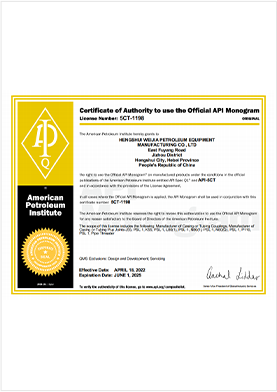- Afrikaans
- Albanian
- Amharic
- Arabic
- Armenian
- Azerbaijani
- Basque
- Belarusian
- Bengali
- Bosnian
- Bulgarian
- Catalan
- Cebuano
- Corsican
- Croatian
- Czech
- Danish
- Dutch
- English
- Esperanto
- Estonian
- Finnish
- French
- Frisian
- Galician
- Georgian
- German
- Greek
- Gujarati
- Haitian Creole
- hausa
- hawaiian
- Hebrew
- Hindi
- Miao
- Hungarian
- Icelandic
- igbo
- Indonesian
- irish
- Italian
- Japanese
- Javanese
- Kannada
- kazakh
- Khmer
- Rwandese
- Korean
- Kurdish
- Kyrgyz
- Lao
- Latin
- Latvian
- Lithuanian
- Luxembourgish
- Macedonian
- Malgashi
- Malay
- Malayalam
- Maltese
- Maori
- Marathi
- Mongolian
- Myanmar
- Nepali
- Norwegian
- Norwegian
- Occitan
- Pashto
- Persian
- Polish
- Portuguese
- Punjabi
- Romanian
- Russian
- Samoan
- Scottish Gaelic
- Serbian
- Sesotho
- Shona
- Sindhi
- Sinhala
- Slovak
- Slovenian
- Somali
- Spanish
- Sundanese
- Swahili
- Swedish
- Tagalog
- Tajik
- Tamil
- Tatar
- Telugu
- Thai
- Turkish
- Turkmen
- Ukrainian
- Urdu
- Uighur
- Uzbek
- Vietnamese
- Welsh
- Bantu
- Yiddish
- Yoruba
- Zulu
api pup joint
Understanding the API Pup Joint A Comprehensive Overview
The term API pup joint is commonly associated with the oil and gas industry, particularly in relation to drilling operations and the construction of piping systems. To explore this topic, we will delve into what API pup joints are, their significance, specifications, and applications in the field.
What is an API Pup Joint?
An API pup joint is a short length of pipe used in drilling operations. It serves as a section that can be used to adjust the length of drill strings or piping systems. The term API refers to the American Petroleum Institute, which establishes various standards that govern the design, manufacturing, and testing of equipment used in the oil and gas industry. In essence, the pup joint aligns with these API standards, ensuring reliability and safety in drilling operations.
Specifications and Standards
API pup joints are available in different sizes, thicknesses, and materials. The most common specifications refer to API 5L and API 5CT, which cover the requirements for steel pipes used for transmission pipelines and casing and tubing in wells, respectively. The size of a pup joint generally ranges from 2.375 inches to 20 inches in diameter, with lengths typically varying from 2 feet to 10 feet.
The material of pup joints is critical to their performance. They are typically made from high-strength steel, capable of withstanding the extreme conditions encountered during drilling. API categorizes these materials into different grades, such as Grades A, B, C, and D, depending on their yield strength and tensile strength. The grade of steel utilized is essential for determining the pup joint's ability to handle the pressures and stresses of drilling activities.
Importance in Drilling Operations
api pup joint

Pup joints play a vital role in ensuring the efficiency and safety of drilling operations. By allowing for incremental adjustments of pipe length, they enable engineers and rig operators to optimize wellbore depth and maintain the integrity of the drilling process. This adaptability is crucial given the varying depths and geological conditions encountered while drilling.
Moreover, pup joints facilitate the maintenance of proper clearance between the drill bit and the wellbore. This is essential for effective drilling and helps to prevent incidents such as stuck pipes or blowouts. By enabling precise adjustments, pup joints contribute directly to the risk management strategies employed on drilling sites.
Applications in the Oil and Gas Industry
The primary application of API pup joints is in drilling operations; however, their utility is not confined to this domain. They are also frequently used in completion operations, where they help to set casing in place or contribute to the configuration of wellhead assemblies. Additionally, pup joints can be found in various pipeline systems, where they are instrumental in connecting segments of piping while ensuring the integrity of gas or fluid transport.
Outside of drilling, pup joints can be employed in pressure testing and inspection operations. Their ability to provide shorter lengths of pipe makes them ideal for creating test loops, allowing for effective validation of system integrity without the need for a significant investment in custom lengths of piping.
Conclusion
In summary, API pup joints are a fundamental component of drilling and pipeline operations within the oil and gas industry. Their adherence to API standards ensures that they provide the necessary strength and reliability demanded by the harsh conditions of drilling environments. The ability to adjust pipe lengths enhances operational efficiency and safety, while their diverse applications underscore their importance beyond mere length adjustments. Understanding the significance and functionality of API pup joints can help industry professionals make informed decisions throughout the drilling process, contributing to successful and safe oil and gas extraction. As the industry continues to evolve, the role of such components will undoubtedly adapt and remain crucial in supporting advancements and improvements in drilling technology and practices.
-
Tubing Pup Joints: Essential Components for Oil and Gas OperationsNewsJul.10,2025
-
Pup Joints: Essential Components for Reliable Drilling OperationsNewsJul.10,2025
-
Pipe Couplings: Connecting Your World EfficientlyNewsJul.10,2025
-
Mastering Oilfield Operations with Quality Tubing and CasingNewsJul.10,2025
-
High-Quality Casing Couplings for Every NeedNewsJul.10,2025
-
Boost Your Drilling Efficiency with Premium Crossover Tools & Seating NipplesNewsJul.10,2025







